River Jordan( Where Jesus was Baptized)
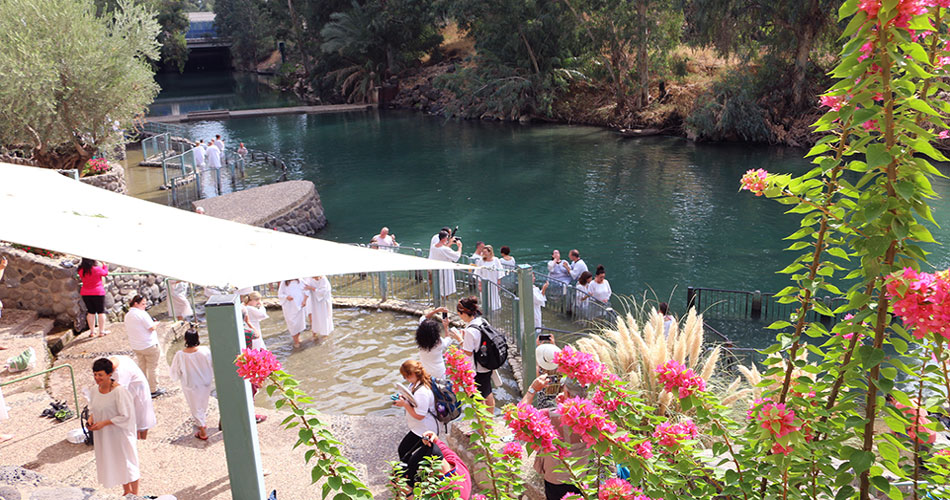
The Baptism of Jesus Christ, described in all four Gospels, took place in the Jordan River, just a few miles north of the Dead Sea and roughly six miles east of Jericho. Not only did Jesus’ baptism serve as a fulfillment of Old Testament prophecy and a confirmation of his divinity as the Son of God, the baptism of Jesus is generally seen as the beginning of Christ’s public ministry.The Jordan River (Ha-Yarden in Hebrew) is an important geographical feature in the Middle East and key location in the history of Israel and the Bible.Today, the nearly 156 miles of the Jordan River flow southward from Mount Hermon, located on the border of modern-day Syria and Lebanon, and drain into the Sea of Galilee in northern Israel.The Sea of Galilee, sometimes referred to as Lake Gennesaret (Luke 5:1) or Sea of Tiberius (John 6:1, John 21:1) is only about a day’s walk from Nazareth, the town where Jesus grew up (Matthew 2:19-23). It was also a key location in the ministry of Jesus (Matthew 4:13-22, Mark 4:1-34, Matthew 13:2, Matthew 5-7) and the setting for some of his greatest miracles (Mark 5:21-43, Luke 8:22-25, Luke 9:10-17, John 6:16-21).Once exiting the Sea of Galilee, the Jordan River winds through the Judean countryside, fed by two major tributaries, the Yarmouk and Jabbok (Genesis 32:22) to the east, until it eventually connects with the Dead Sea, where it ends. Prior to reaching the Dead Sea, the Jordan River creates a geographical border between Israel’s West Bank and present-day Jordan to the west.All of these waterways are located in Jordan’s Rift Valley, a massive geological fissure that forms one of the longest cracks and lowest natural depressions on earth. In fact, the Dead Sea, or Salt Sea as it is sometimes referred to, sits at 1,300 feet below sea level, the lowest point on earth.The Jordan River itself, with its lush, sandy shores and steep, rocky banks, is fairly narrow and easy to cross in most places, though the current can be swift and even dangerous in some areas. Beyond the main river flow, however, shallow pools and smaller tributaries are common in the Jordan.
Mount Nebo,Moses ascended the Promised Land
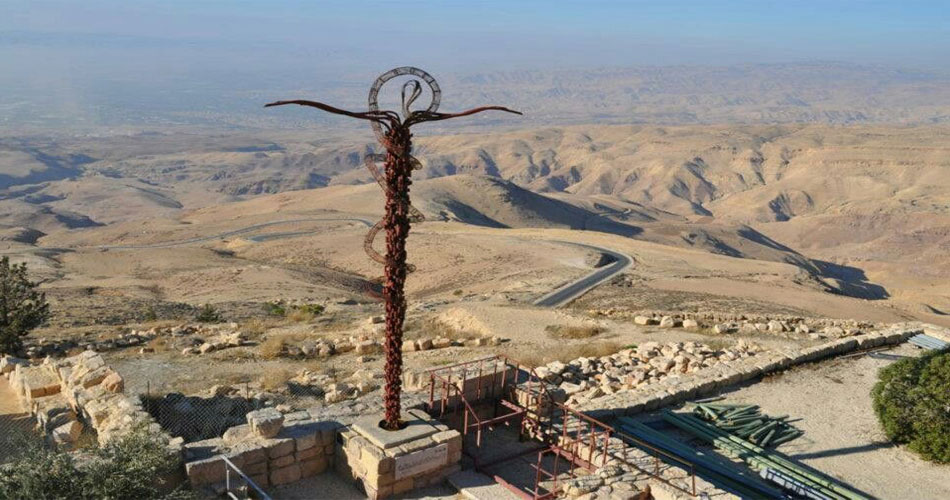
Mount Nebo is an elevated ridge located in Jordan, approximately 710 metres above sea level. Part of the Abarim mountain range, Mount Nebo is mentioned in the Bible as the place where Moses was granted a view of the Promised Land before his death. Mount Nebo is most known for being the site where Moses overlooked the Holy Land but did not enter it and where a church and a monastery were built to honor him. The book of Numbers (33:47) mentions that when the children of Israel moved from Almon Diblathaim they camped in the mountains of Abarim, before Nebo, and that the children of Reuben rebuilt the city (Numbers 32:38).The city remained with the Moabites, according to Isaiah: “Moab will wail over Nebo and over Medeba; on all their heads will be baldness, and every beard cut off” (Isaiah 15:2-3). The Prophet Jeremiah (48:1) said of Nebo, “Thus says the Lord of hosts, the God of Israel: Woe to Nebo! For it is plundered.”The Prophet Moses “went up from the plains of Moab to the top of Pisgah, which is across from Jericho. And the Lord showed him all the land...” but told him, “you shall not go over there.” (Deuteronomy 34:1-4). “So Moses the servant of the LORD died there in the land of Moab, according to the word of the LORD, and he buried him in the valley in the land of Moab opposite Beth-peor; but no one knows the place of his burial to this day.” (Deuteronomy 34:5-6).In the fourth century three domed buildings were erected in the place of the current altar. The place used to have a hidden passage which contained graves decorated with mosaics. On both sides of the place there were two small churches for performing the burial prayers. The baptistery, which is in the northern section of the site, is decorated with mosaics, while the floor of the southern section is decorated with a large cross.
Our Lady of Mountain, Anjara, Jordan
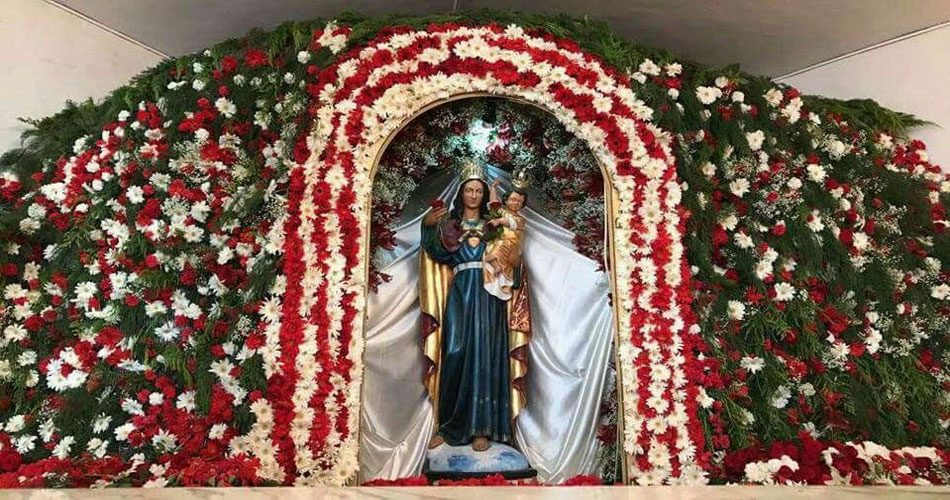
It is believed that Jesus Christ, his disciples, and the Virgin Mary passed through Anjara in the hills of Gilead once and rested in a cave there during a journey between the Sea of Galilee, the Decapolis Cities, Bethany Beyond the Jordan and Jerusalem. The cave in Anjara has long been a holy place for pilgrims and has now been commemorated with a modern shrine, the Church of Our Lady of the Mountain. The cave was also designated by the Catholic Churches of the Middle East as one of the five pilgrimage sites for the year 2000.The sanctuary of Our Lady of the Mount on the heights of Anjara, welcomed the faithful from all over the country and from different churches. This pilgrimage was launched by Father Yousef Ne’mat, a priest of the Latin Patriarchate, who built the first sanctuary in memory of the passing by of Christ in this place. According to tradition, the Virgin Mary and her Son would have walked the mountain range, which runs along the Jordan and would have taken refuge for a time here in the present location of Anjara during their journey. This pilgrimage gradually became one of the important feasts in the Jordanian Church.
Madaba(assigned to Jacob’s eldest son with Leah; Reuben)
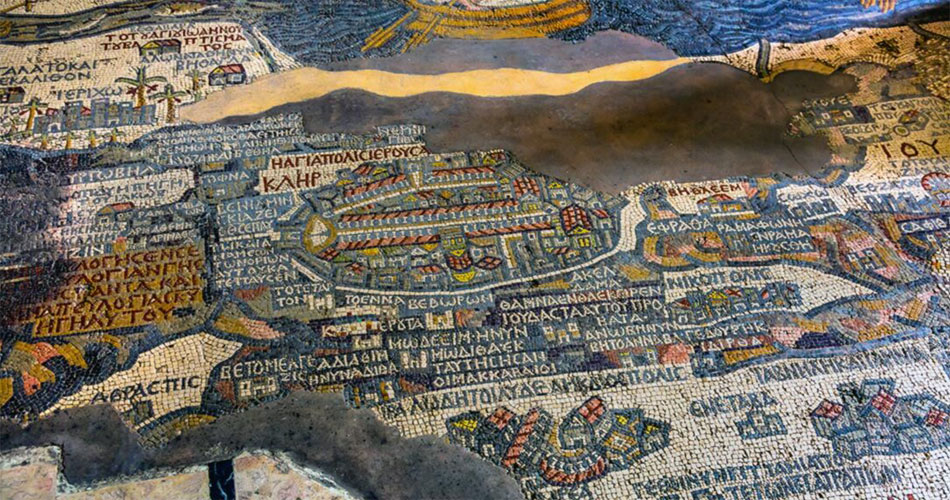
The book of Joshua mentions that Madaba and its neighboring areas were assigned to Jacob’s eldest son with Leah; Reuben: “So their territory was from Aroer, which is on the edge of the Valley of the Arnon (Al-Mujib), and the city that is in the middle of the valley, and all the tableland by Medeba…And the border of the people of Reuben was the Jordan as a boundary. This was the inheritance of the people of Reuben, according to their clans with their cities and villages.” (Joshua 13:16-23).The region was incorporated into the Roman Province of Arabia in A.D. 106, following Trajan's defeat of the Nabataeans at Petra. Christianity gained a foothold in the Madaba region during the late Roman period. There is evidence of a bishop in Madaba as early as the middle of the 5th century.Two to three days will allow enough time to explore the main sites and attractions and to sample the city's range of restaurants and eateries. Madaba can be visited any time of year but temperatures are more pleasant during spring and autumn which is also a perfect time for hiking.You will visit Petra, one of the wonders of the ancient world; Jerash, the best preserved city of the Decapolis; the Baptismal place of Jesus on the River Jordan; Mt Nebo, from where Moses viewed the Promised Land, and, for fun, we include a float on the Dead Sea.
The footsteps of St. Paul in Turkey
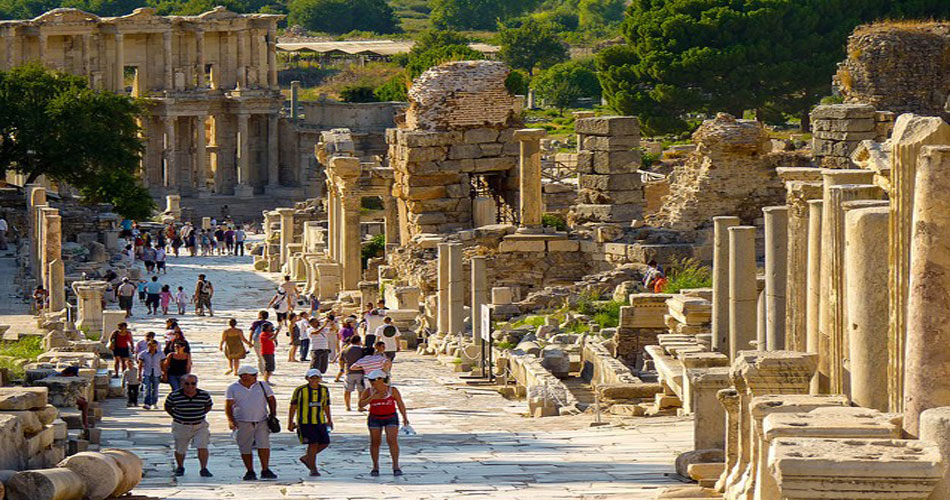
A Christian Pilgrimage to Turkey is a journey in the footsteps of St. Paul, one of the most famous early Christian missionaries. Born within Turkey's borders and the founder of the first Christian communities in Turkey.Even though people from different religions constitute the population of Turkey, there is a strong Christian influence out there that cannot be denied. Some of the famous churches located there are The Armenian Apostolic Church, Bulgarian St. Stephen Church, St. Paul Orthodox Church.Paul became blind and did not eat or drink for three days. In Damascus, the Lord sent a disciple called Ananias to him, who restored his vision, filled him with the Holy Spirit and baptized him.Apostle Paul forever changed the course of Christianity, his missionary journeys spreading the gospel of Christ and founding some of the world's first ever churches. For many years he journeyed across Asia Minor, now modern day Turkey, the chronicles portrayed in numerous books in the New Testament.
The House of the Virgin Mary(Mother Mary)Ephesus,Turkey
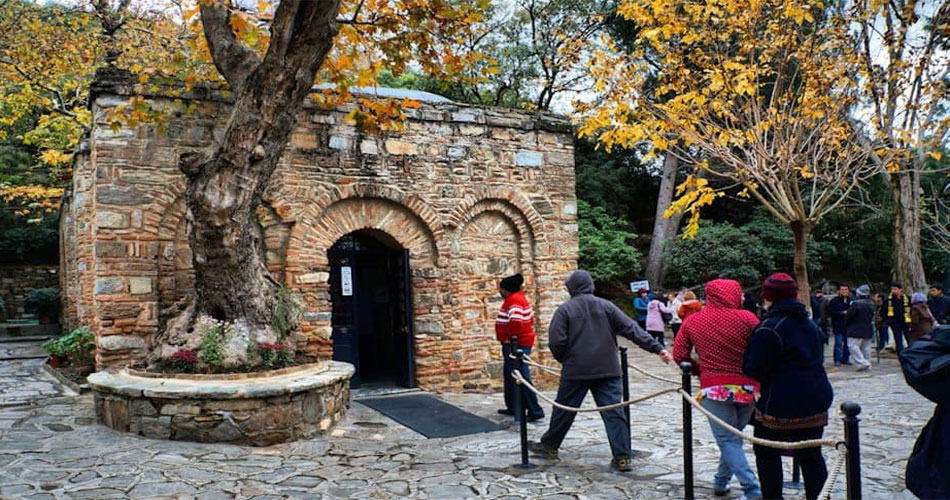
The House of the Virgin Mary (Turkish: Meryemana Evi or Meryem Ana Evi, "Mother Mary's House") is a Catholic shrine located on Mt. Koressos (Turkish: Bülbüldağı, "Mount Nightingale") in the vicinity of Ephesus, 7 kilometres (4.3 mi) from Selçuk in Turkey.According to predominant Christian belief, Mary was brought to Ephesus by the Apostle John after the Resurrection of Christ and lived her final days there. This is based on the belief that John came to Ephesus combined with the Biblical statement that Jesus consigned her to John's care (John 19:26-27).Ephesus has had a long tradition of being a centre of religious pilgrimage. The earliest pilgrims arrived to worship the Anatolian goddess known as Kybele. Later, this deity merged with the Greek goddess Artemis and was venerated at the great Artemision, attracting the pilgrims from all over the Mediterranean region. These ancient cults of female deities were later echoed in the worship of St. Mary, mother of Jesus, that supposedly spent the last years of her life in Ephesus. According to this tradition, Mary arrived at Ephesus together with St. John and lived there until her Assumption (according to the Catholic doctrine) or Dormition (according to the Orthodox beliefs). The House of the Virgin Mary (Meryem Ana Evi in Turkish) which can be still visited today, is a place where, according to the beliefs of many people, Mary, the mother of Jesus, spent the last years of her life. However, similarly to the history of St. John, there are many questions and uncertainties regarding this location.Christian Historians and religious experts agree that Saint John, Saint Paul, and the Virgin Mary lived in the ancient city of Ephesus that these days is one of Turkey’s top attractions. However, the discovery of the Virgin Mary’s house was from an unexpected source. In the early 19th century, a Christian nun named Anne Catherine Emmerich took to her bed, where she dreamed intensely. Some sources accused her of religious ecstasy, while others said she had contracted a fever. Her dreams and visions included stories of Jesus Christ and the Virgin Mary.
Go Back To Home